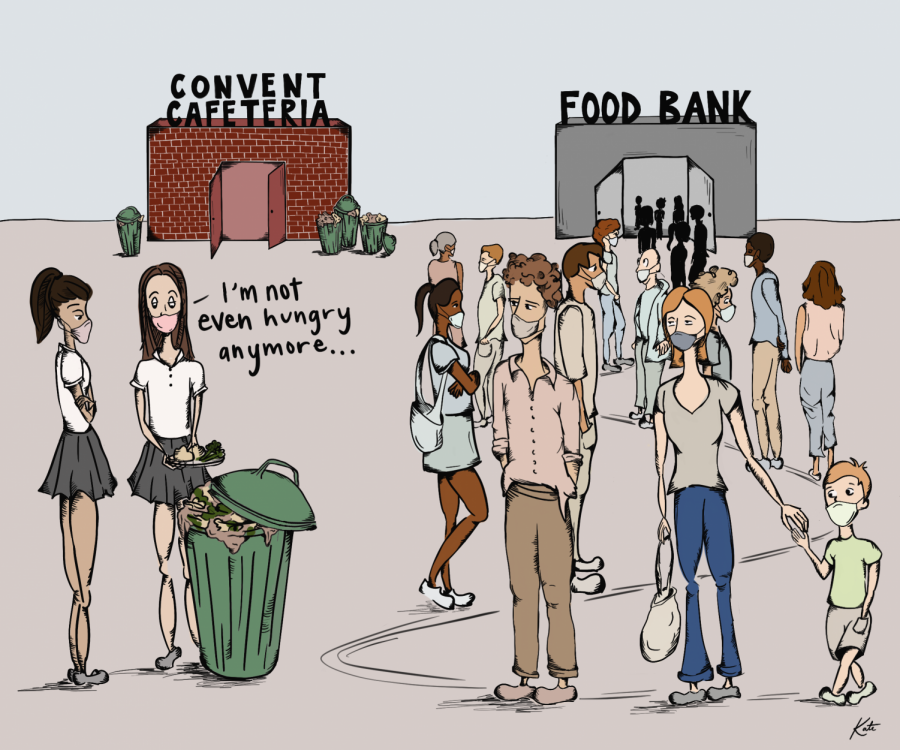Fighting food insecurity
Reducing individual food waste is a first step to a more food secure nation
February 22, 2021
The age-old phrase of “Don’t bite off more than you can chew” applies to many aspects of life, but in the midst of a global pandemic, it should be taken literally, and as s food insecurity skyrockets during the COVID-19 pandemic, we should be more conscientious about limiting personal food waste.
From the start of the pandemic, both widespread economic instability and farmers’ destruction of crops due to lack of demand has resulted in a surge of food insecurity, according to Foodtank.
The number of people experiencing acute food instability has doubled from 135 million in 2019 to 265 million in 2020 due to the economic impact of the pandemic, according to the United Nations World Food Program.
Before the pandemic, food insecurity resulted from a combination of factors including inefficient transportation and handling of products, changes in the supply chain due to weather shifts, and consumers’ lack of accessibility to nutritious food.
American consumers waste about a pound of food per day, about 225-290 pounds a year — enough to feed 2 billion people each year Less waste could drastically shift the scope of food insecure individuals, as it makes more food available.
It is easy to toss a partially-eaten Sage hot meal or pre-packaged sandwich in the compost bin, but we should be also thinking about those who do not have the privilege of nutritious and plentiful food at their disposal. Placing a conscious effort to reduce one’s food waste by taking only what we know we will eat can result in less food being purchased, and more food available for distribution.
Convent & Stuart Hall provides students with two nutritious and comprehensive meals when attending school in-person, and this privilege should not be taken for granted. We should take advantage of this opportunity and yet still be aware of the many struggling with food instability.
Over 30 million children nationwide depend on free or reduced cost school lunches through the National School Lunch Program, a federal meal program operating in public and nonprofit private schools, but children who are still taking classes remotely do not have access to these meals.
As members of a community with ample access to food and resources, we should divert energy to providing for those who are not as fortunate. Aside from wasting less food, we can donate shelf-stable or non-perishable dry or canned food, or make a monetary donation to a local food ban or pantry..
Food banks across the nation have increased food distribution 50% over the last year, and provided more than 4.2 billion meals since the start of the pandemic last March, according to Feeding America, a non-profit organization that supports 200 food storage centers and 60,000 pantries nationwide.
The issue of food scarcity may seem daunting and difficult to tackle, but small steps made by individuals can add up, and we can help lessen the crippling effects of food insecurity.










